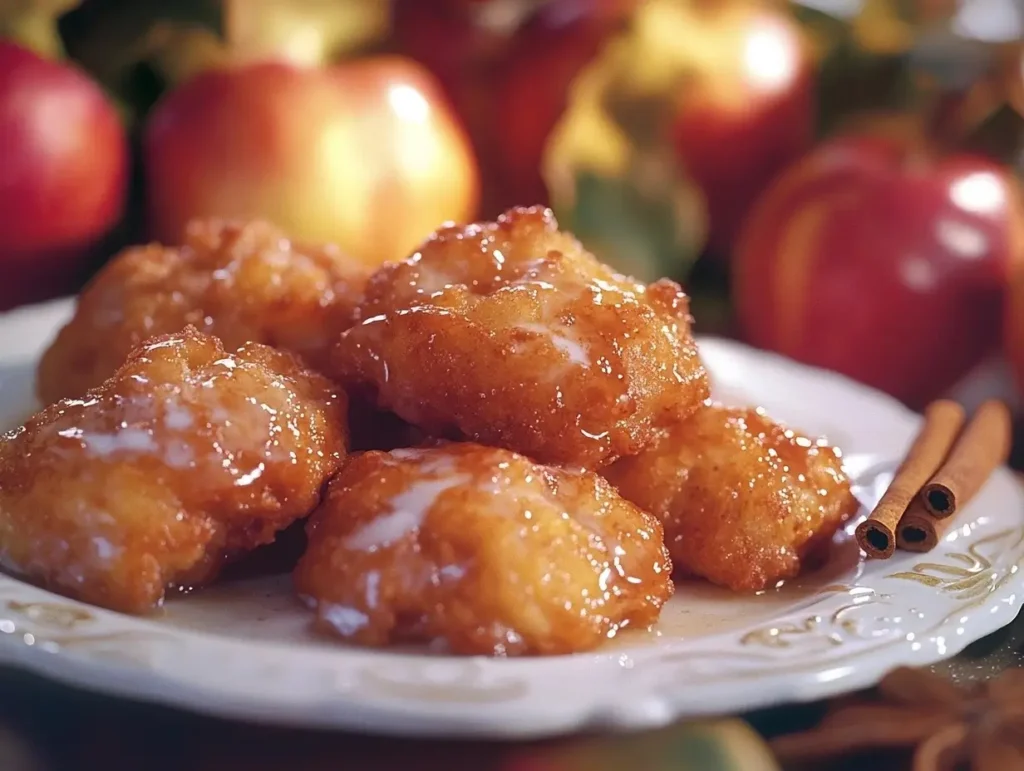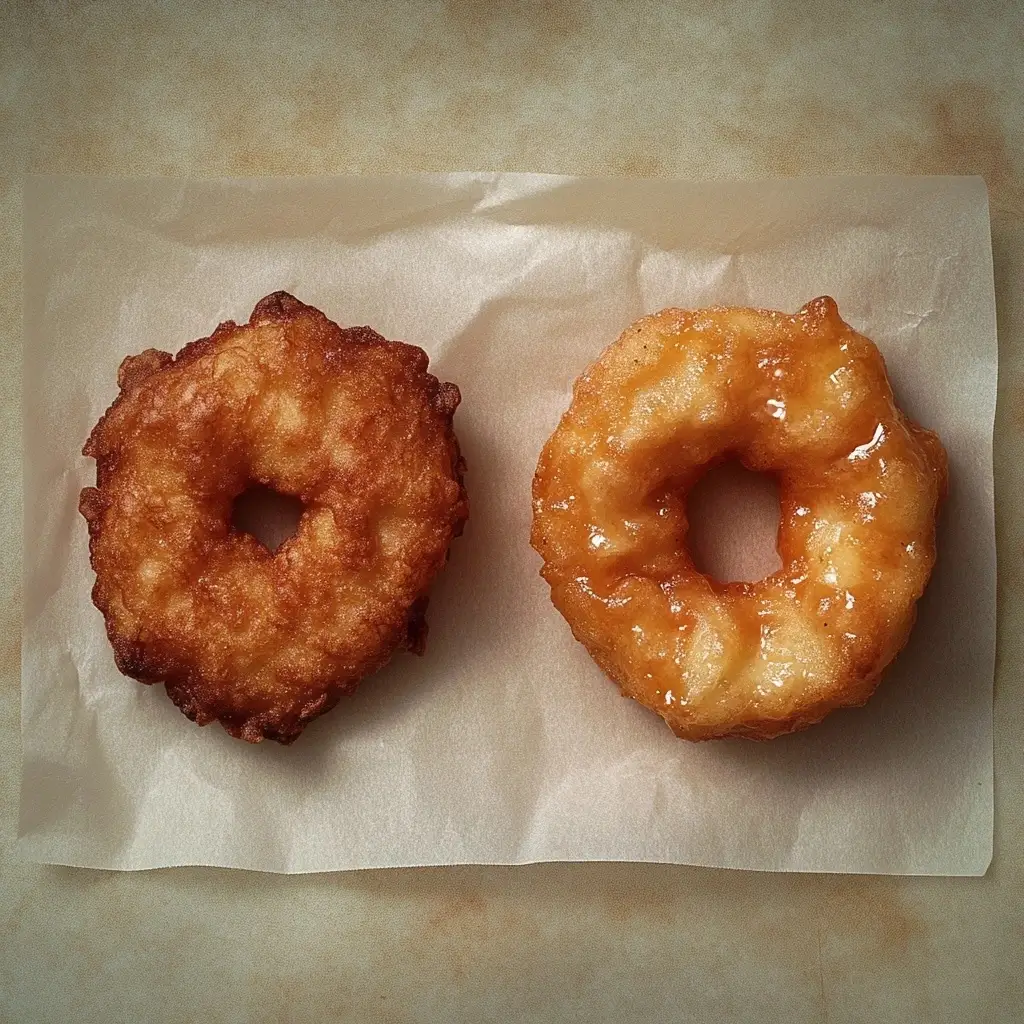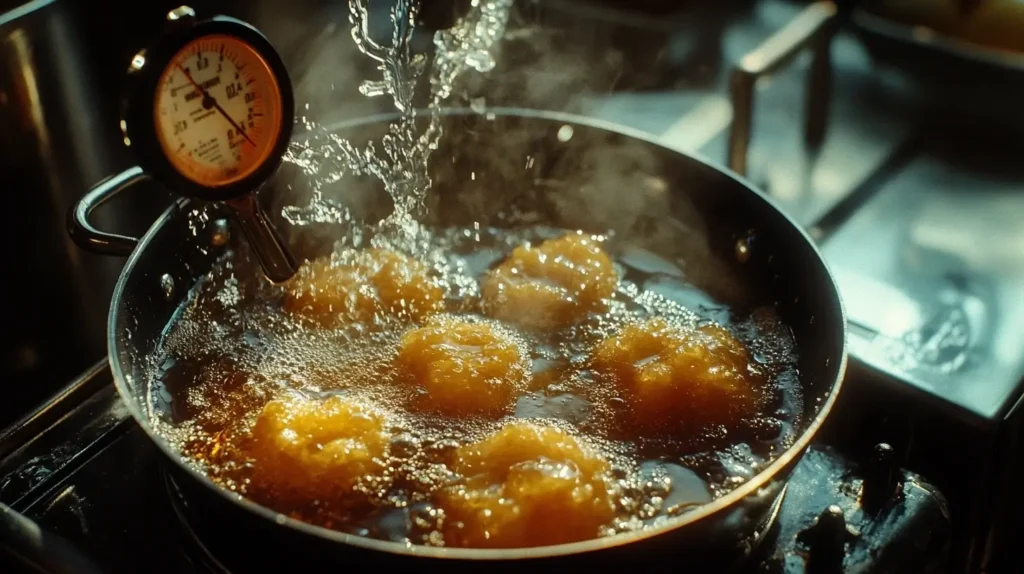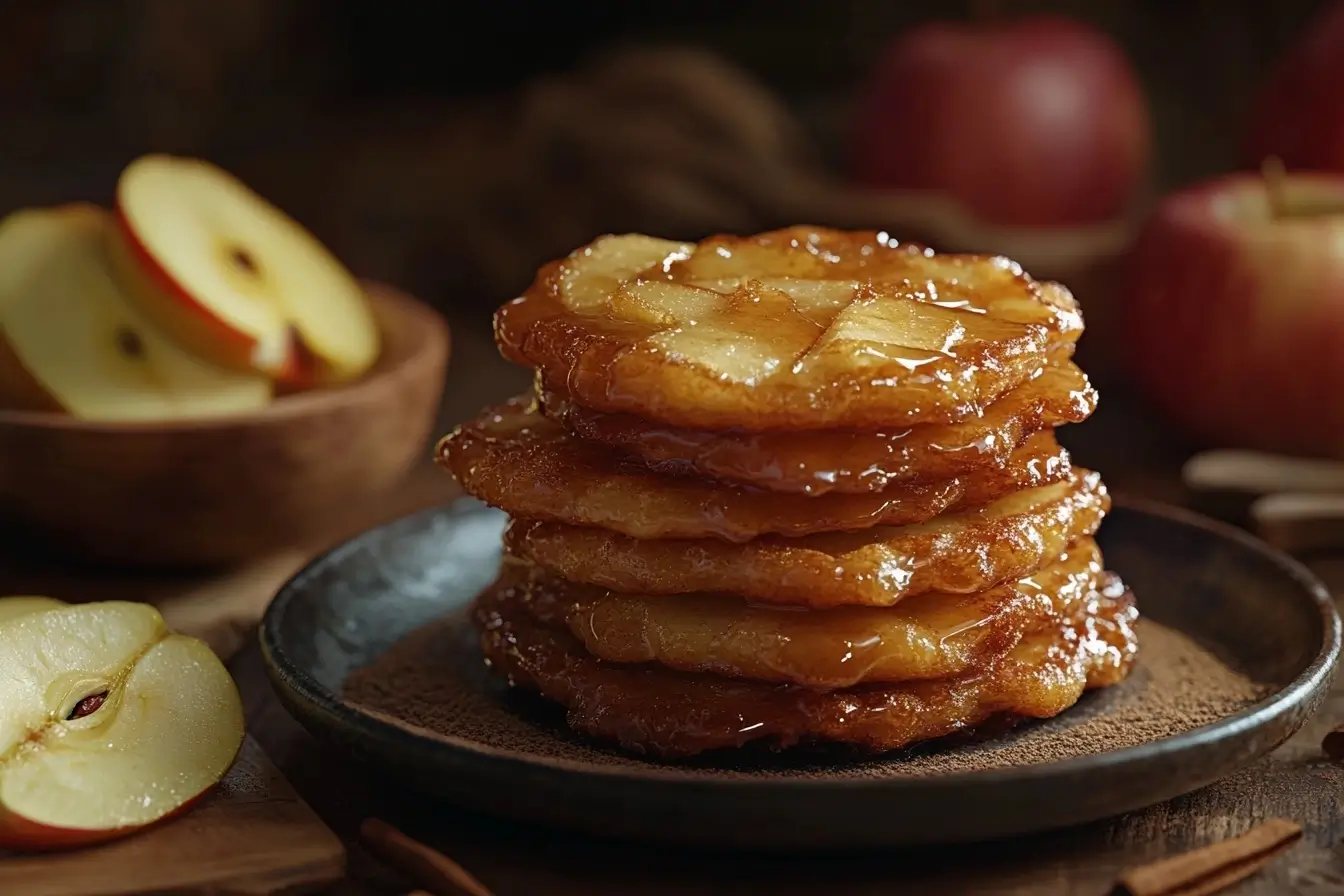Apple fritters are a delightful treat, but they can quickly become disappointing when they turn soggy. Soggy apple fritters are a common issue, often caused by excess moisture, improper frying techniques, or storage mistakes. With the right tips and techniques, you can prevent soggy fritters and enjoy crispy, golden treats every time. In this guide, we’ll uncover the causes and solutions for perfectly crisp fritters.
Introduction to Apple Fritters
Apple fritters are a delicious fried dessert made by combining batter and apple chunks, then frying the mixture until golden brown. While they seem simple to make, their preparation requires care to achieve the desired balance of crispiness and softness. When done right, fritters are a sensory delight — light, airy, and packed with flavor.
Definition and Origin
The term “fritter” originates from the Latin word frictura, which means “fried.” This dessert has variations across many cultures, including American, French, and Asian cuisines. However, sogginess can plague even seasoned cooks, making it crucial to understand the roots of the issue.
For detailed steps and expert tips, check out How to Make Perfect Baked Apple Fritters: A Healthier Twist on a Classic Treat.
Popularity in Various Cultures
From fairs to home kitchens, apple fritters have become synonymous with comfort food. Their combination of fried batter and sweet apples appeals to all age groups. That said, achieving the ideal texture can be tricky without the right techniques.

Common Issues in Apple Fritter Preparation
Identifying Sogginess
Sogginess often reveals itself in a limp, greasy texture that lacks the satisfying crunch of a well-fried fritter. It can be caused by excess moisture in the batter or improper frying methods.
Other Frequent Problems
Aside from sogginess, apple fritters can suffer from uneven cooking, excessive oil absorption, or a heavy, doughy consistency. These issues usually stem from small but fixable mistakes in preparation or cooking.
Excess Moisture in Batter and How to Prevent Soggy Apple Fritters
Moisture is one of the biggest culprits behind soggy apple fritters. When the batter holds too much water, it prevents the fritters from crisping up properly and encourages oil absorption during frying. Tackling this issue begins with managing the water content of your ingredients.
High Water Content in Apples: A Common Apple Fritter Mistake
Apples naturally contain varying amounts of water, and some varieties release more liquid during cooking than others. Juicy apples like Fuji or Gala can release excess water, seeping into the batter and leading to soggy fritters. Instead, choose firmer apples like Granny Smith or Honeycrisp, which are less likely to release excess moisture.
For extra precaution, gently press diced apples between paper towels to wick away surface moisture before adding them to the batter. This small step helps prevent sogginess and ensures a crispier fritter.
Inadequate Drying of Apples: A Preventable Apple Fritter Mistake
Even with the right apple choice, not drying them thoroughly can doom your fritters. Wet apple chunks mix with the batter and contribute to its sogginess. To avoid this, pat the diced apples dry using a clean kitchen towel or paper towels. For added protection, sprinkle the dried apple pieces with a touch of cornstarch. This absorbs any hidden moisture and creates a barrier, keeping your batter intact during frying.

Improper Batter Consistency: A Key to Avoid Soggy Apple Fritters
The batter forms the foundation of your fritters, and its consistency is vital. Batter that’s too thin or incorrectly mixed is more likely to produce greasy, soggy fritters instead of the desired crispy exterior.
Overly Thin Batter: A Recipe for Greasy Fritters
Thin, runny batter struggles to stick to the apples and creates an uneven coating. This allows oil to seep into the fritters during frying, making them greasy. Aim for a batter with a thick, pancake-like consistency. If the batter feels too watery, gradually add more flour, one tablespoon at a time, until it reaches the right thickness. Alternatively, reduce the amount of liquid in your recipe.
Incorrect Ingredient Ratios: A Common Cause of Soggy Fritters
Measuring your ingredients precisely is crucial to getting the balance between wet and dry components right. Too much liquid, such as milk or eggs, can upset the batter’s stability, leading to sogginess. A kitchen scale is a handy tool for maintaining proper ratios, helping you avoid accidental mistakes. Adjusting your measurements carefully ensures a batter that holds up during frying and creates delightfully crispy apple fritters.
Frying Technique Errors
Even with the perfect batter, poor frying techniques can ruin the final result. From the oil’s temperature to the way the fritters are added to the pan, small missteps can lead to subpar textures.
Inconsistent Oil Temperature
The frying oil’s temperature is one of the most critical factors in achieving crispy apple fritters. If the oil is too cold, the batter absorbs it, turning the fritters soggy. Conversely, overheating the oil can cause the outside to burn before the inside cooks through. Using a thermometer to maintain an ideal range of 350°F to 375°F ensures an even cook every time.
Overcrowding the Frying Pan
Adding too many fritters at once lowers the oil’s temperature rapidly, which can lead to uneven cooking and soggy results. To prevent this, fry in small batches and allow the oil to return to its proper temperature between batches. This step also gives each fritter enough space to crisp up properly.
Post-Frying Handling
The way fritters are handled after frying plays a significant role in maintaining their texture. Improper handling can undo all the work put into preparing and frying them correctly.
Inadequate Draining of Oil
Immediately after frying, fritters should be placed on a wire rack or paper towels to drain excess oil. Skipping this step can cause the fritters to sit in residual oil, leading to a greasy texture. Elevating them on a rack allows air to circulate, keeping the outside crisp.
Improper Storage Methods
Storing fritters improperly can lead to sogginess over time. If you’re not serving them immediately, avoid sealing them in an airtight container while they’re still warm, as this traps steam. Instead, let them cool completely and store them on a plate covered loosely with a paper towel.
Selecting the Right Apples
Choosing the right type of apple can significantly improve the texture of your fritters. Apples with less moisture and a firmer texture work best for frying, as they minimize excess water in the batter.
Recommended Apple Varieties
Certain apples, like Granny Smith, Honeycrisp, or Pink Lady, are ideal for apple fritters because of their firm flesh and balanced sweetness. These varieties hold their shape when cooked and release minimal moisture into the batter. Avoid using overly juicy apples like Red Delicious or Fuji, which can make the batter soggy and difficult to fry evenly.
Preparing Apples to Reduce Moisture
Once you’ve selected the right apples, proper preparation is essential. Start by peeling and coring the apples to remove the fibrous parts. Dice them into small, uniform chunks for even cooking. Before mixing them into the batter, pat the apple pieces dry with paper towels to eliminate surface moisture. To go the extra mile, lightly toss the diced apples with a small amount of flour or cornstarch—this creates a barrier that prevents water from seeping into the batter.
Achieving Optimal Batter Consistency
Getting the batter right is the key to achieving fritters that are light and crispy rather than heavy and soggy. Striking the right balance between wet and dry ingredients ensures the fritters hold their shape and fry properly.
Balancing Wet and Dry Ingredients
The ratio of wet to dry ingredients in your batter is critical. Too much liquid can result in a runny batter that absorbs oil, while too little can make the fritters dense. Begin by following your recipe’s measurements precisely, then adjust as needed. For example, if the batter feels too thick, add a small amount of milk or water. If it’s too thin, incorporate extra flour, one tablespoon at a time, to thicken it up.
Testing Batter Thickness
A quick way to check batter consistency is to scoop up a spoonful and let it drip back into the bowl. If it falls off in a steady, thick stream, it’s the perfect texture. Thin, watery batter requires adjustments, as it won’t adhere well to the apples and will cook unevenly. Always test the batter before frying the first fritter; this saves time and avoids a full batch gone wrong.
Mastering Frying Techniques to Prevent Soggy Apple Fritters
Frying is an art, and mastering it ensures perfectly crispy apple fritters. Small adjustments, such as maintaining oil temperature and using the right equipment, can make a world of difference in avoiding soggy apple fritters.
Maintaining Correct Oil Temperature to Avoid Apple Fritter Mistakes
The ideal frying temperature for apple fritters is between 350°F and 375°F. If the oil is too hot, the fritters can burn on the outside while remaining raw and undercooked in the middle. On the other hand, frying at too low a temperature allows the batter to absorb excess oil, resulting in greasy and soggy apple fritters.
Using a reliable thermometer to monitor the oil’s temperature is essential for achieving even frying. Fry in small batches, ensuring that you don’t overcrowd the pan. Overcrowding not only lowers the oil temperature but also prevents the fritters from cooking evenly. These small steps can significantly help prevent soggy fritters.
Choosing Appropriate Frying Equipment for Crispy Apple Fritters
Your choice of frying equipment plays a crucial role in achieving consistent results. A deep, heavy-bottomed pan or Dutch oven is ideal for frying fritters, as it retains heat well and ensures even cooking. Shallow pans should be avoided because they make flipping the fritters difficult and can lead to uneven cooking.
Additionally, invest in a spider skimmer or slotted spoon for lifting fritters out of the oil. This minimizes breakage and ensures excess oil drips off quickly. Using the right tools and following these crispy apple fritters tips can make the frying process smoother and your results more consistent.

Proper Post-Frying Practices to Prevent Soggy Apple Fritters
Once your fritters are fried to golden perfection, how you handle them afterward determines whether they stay crispy apple fritters or turn into soggy apple fritters. Proper techniques for draining oil and storing fritters can make all the difference.
Effective Oil Draining Methods to Prevent Soggy Fritters
Draining excess oil is essential to maintain the fritters’ crisp exterior. Place the fritters on a wire rack positioned over a baking sheet immediately after frying. This setup allows the oil to drip away without the fritters sitting in grease.
While paper towels can be used briefly, avoid stacking fritters on them for extended periods. The towels can trap oil against the fritters, leading to a soft, soggy underside. Instead, after a quick blot with a paper towel, transfer the fritters to the wire rack. This simple method ensures they cool evenly without compromising their texture.
Ideal Serving and Storage Conditions for Apple Fritters
For the best flavor and texture, serve apple fritters as soon as possible after frying. Their crispy crust is most satisfying when warm and fresh. However, if you need to store them, avoid placing warm fritters in airtight containers. The trapped steam can soften the crust, undoing your frying efforts.
Instead, allow the fritters to cool completely and loosely cover them with a paper towel. To reheat, use an oven or air fryer to restore their crispness. Avoid microwaves, as they tend to make fritters rubbery and damp. These apple fritter troubleshooting tips ensure that your fritters remain enjoyable, even after storage.
Baking Apple Fritters
Baking is a healthier alternative to deep-frying that can still yield delicious apple fritters. With the right techniques, you can achieve a crisp exterior and a tender interior, minus the excess oil.
Baking Techniques to Ensure Crispness
To create crispiness in the oven, preheat to 375°F to 400°F and use a well-greased or parchment-lined baking sheet. Arrange the fritters evenly, leaving enough space between each piece for air circulation. Before baking, lightly brush the tops with melted butter or egg wash to promote browning. Halfway through, flip the fritters for an even bake. Bake until golden brown, typically 15-20 minutes, depending on size.
Pros and Cons of Baking vs. Frying
| Aspect | Baking | Frying |
|---|---|---|
| Health Benefits | Lower in calories, less oil absorption | Higher calorie content due to frying oil |
| Crispiness | Can be crispy with proper techniques | Naturally crisp due to frying |
| Ease of Preparation | Requires less monitoring | Demands precise oil temperature control |
| Texture | Slightly drier | Rich and moist inside with a crunchy exterior |
| Time Required | Longer baking time | Faster cooking time |
Both methods have unique advantages. Baking is ideal for those seeking a healthier option, while frying is preferred for achieving that signature crunch and rich texture.
Air Frying Apple Fritters
Air frying not only reduces the mess of traditional frying but also significantly lowers the calorie content by using little to no oil. According to Healthline, air frying can be a healthier alternative to deep frying, cutting fat by up to 70% while retaining flavor and texture.
Steps for Air Frying
- Preheat the air fryer to 350°F.
- Lightly grease the air fryer basket to prevent sticking.
- Arrange fritters in a single layer, ensuring they don’t touch each other.
- Lightly spray or brush the fritters with oil for an extra crisp finish.
- Air fry for 8-10 minutes, flipping halfway through for even cooking.
- Check for a golden-brown exterior and adjust cooking time if necessary.
Benefits of Air Frying
Air frying significantly reduces the amount of oil needed, which cuts down on fat and calories. Additionally, it’s faster than oven baking and doesn’t require preheating a large appliance. Unlike deep frying, it’s less messy and easier to clean up. For busy home cooks, air frying delivers convenience without sacrificing flavor or texture.
Frequently Asked Questions (FAQs)
How Can I Keep My Fritters Crispy for Longer?
To keep fritters crispy, make sure to drain them on a wire rack right after frying. This prevents them from sitting in excess oil, which can make them greasy and soft. Furthermore, avoid stacking fritters, as this traps steam that can quickly soften their crispy crust. If you’re not serving them immediately, store the fritters in a loosely covered container at room temperature. When it’s time to enjoy them again, reheat the fritters in the oven or air fryer to restore their crispiness. On the other hand, microwaving should be avoided, as it tends to make fritters soggy and unappealing.
Can I Bake Apple Fritters?
Yes, apple fritters can be baked as a healthier alternative to frying. Bake them at 375°F to 400°F on a parchment-lined sheet. Brush the tops with melted butter or egg wash before baking for a golden, crispy finish.
How to Bake Apple Fritters?
Preheat your oven to 375°F to ensure the proper temperature for baking apple fritters. While the oven heats, prepare the fritter batter as directed in your recipe. Scoop dollops of the batter onto a greased or parchment-lined baking sheet, spacing them apart to promote even cooking and prevent them from sticking together. Next, lightly brush the tops of the fritters with melted butter to help them achieve a golden, crispy finish. Bake for 15-20 minutes, flipping each fritter halfway through to ensure uniform browning on both sides. When finished, the fritters should be golden brown and deliciously crisp. For a complete guide on baking fritters to perfection, visit How to Bake Apple Fritters: Step-by-Step Guide for Delicious Treats.
Can You Bake Apple Fritters Instead of Frying?
Absolutely! Baking is a great way to make apple fritters without the mess and calories of frying. While they won’t have the same crunch as fried fritters, you can use techniques like brushing with butter or using a convection setting to achieve crispiness. For more insights and a detailed comparison, check out Can You Bake Apple Fritters Instead of Frying? A Healthier Alternative.
Does Baking Soda Make Fritters Crispy?
Yes, baking soda can help make fritters crispy by reacting with acidic ingredients like buttermilk or yogurt to create bubbles in the batter. These bubbles expand during frying or baking, resulting in a light and airy texture. Be careful not to overuse it, as too much can alter the flavor. For a detailed explanation of how baking soda affects fritter crispiness, visit Does Baking Soda Make Fritters Crispy? A Complete Guide.
Why Are My Fritters Not Crispy?
Several factors can cause fritters to lose their crispiness; however, these issues are often easy to fix with the right approach. Common reasons include using a batter that’s too runny, frying at low oil temperatures, or skipping proper oil draining. Therefore, it’s crucial to ensure that the batter is thick enough to coat the apples properly. Additionally, maintaining the oil temperature between 350°F and 375°F will help produce crispy fritters every time. Moreover, draining the fritters on a wire rack immediately after frying can prevent sogginess and preserve their texture.
Why Are My Fritters Raw in the Middle?
Fritters can remain raw inside if the oil is too hot, causing the exterior to cook too quickly. Fry fritters at a steady 350°F to ensure even cooking. Additionally, avoid overcrowding the pan, as this can drop the oil temperature and lead to uneven frying.
Summarizing Key Points
Recap of Common Causes and Solutions
Soggy apple fritters are often caused by excess moisture in the batter, improper frying techniques, or post-frying mistakes. Using low-moisture apples like Granny Smith, ensuring the batter is thick enough, and frying at the correct oil temperature (350°F to 375°F) are key to achieving crispy fritters. Proper oil draining and storage methods can also preserve their texture. Baking or air frying offers healthier alternatives while still delivering delicious results.
Encouragement for Home Cooks
Making perfect apple fritters might seem tricky, but it’s achievable with a little practice and attention to detail. Don’t be discouraged by a batch that turns out less than ideal; each attempt helps you refine your skills. Whether you fry, bake, or air fry, there’s no wrong way to enjoy this classic treat. With these tips, you’re well on your way to mastering the art of crispy apple fritters right in your kitchen!
Enjoy creating fritters that are crisp, golden, and irresistibly delicious every time!

